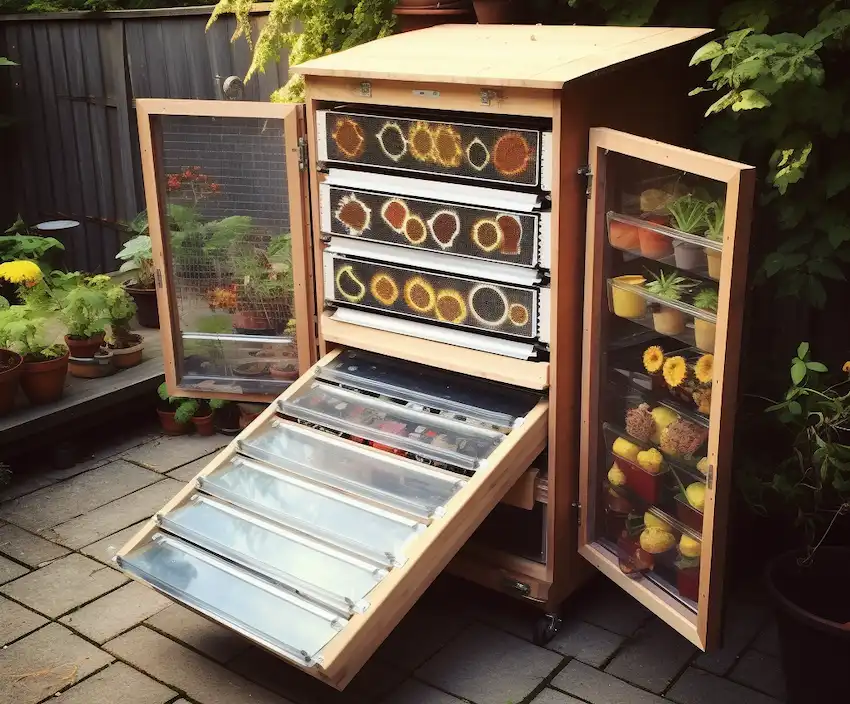How to Make and Use a Solar Dehydrator
A solar dehydrator is an eco-friendly method to preserve food. By harnessing the sun’s energy, you can dry fruits and vegetables, retaining most of their nutrients without the use of electricity. Here’s a step-by-step guide to making your own.

Materials Needed:
- An old kitchen cupboard
- Black paint
- Clear glass or plastic
- Mesh for ventilation and insect protection
- Tools for cutting and fastening (saw, screws, drill, etc.)
Construction Steps:
- Prepare the Cupboard: Select an old kitchen cupboard that can be repurposed. Remove any doors to allow for air circulation.
- Paint It Black: Coat the inside of the cupboard with black paint. Black absorbs heat from the sun, increasing the internal temperature of the dehydrator.
- Shelving: Use shelves from an old fridge or create new ones to allow air to flow between the drying food.
- Cover with Glass: Fit the front of the cupboard with a clear glass or plastic pane. This lets the sunlight in while retaining heat.
- Ventilation: Make a meshed hole on the top to allow hot air to escape, promoting circulation. Also, drill small holes along the sides of the cupboard for air conduits.
- Heat Collector: On the bottom of the cupboard, create a meshed hole for air intake. This will be the heat collector, where the air warms up before rising through the dehydrator.
- Optimal Inclination: Angle the dehydrator so that it faces the sun directly. Avoid placing the heat collector in the shadow for maximum efficiency.
Using Your Solar Dehydrator:
- Prepare the Produce: Slice fruits and vegetables thinly for uniform drying. The correct cut depends on the type of vegetable or fruit.
- Load the Dehydrator: Spread the slices evenly on the shelves, ensuring they do not overlap.
- Dehydration Process: Allow the sun to heat the dehydrator throughout the day. Airflow will carry the moisture away, leaving behind dried produce.
- Monitoring: Check the progress occasionally. Depending on the temperature and the type of produce, dehydration can take a day or more.
- Storage: Once dried, store your fruits and vegetables in airtight containers in a cool, dark place.

Building a solar dehydrator is a simple and sustainable way to preserve food. With some basic materials and a little bit of time, you can create a device that will serve you for many seasons to come. Enjoy the fruits of your labor, naturally preserved by the power of the sun.
Inspired by this? Share the article with your friends!


















